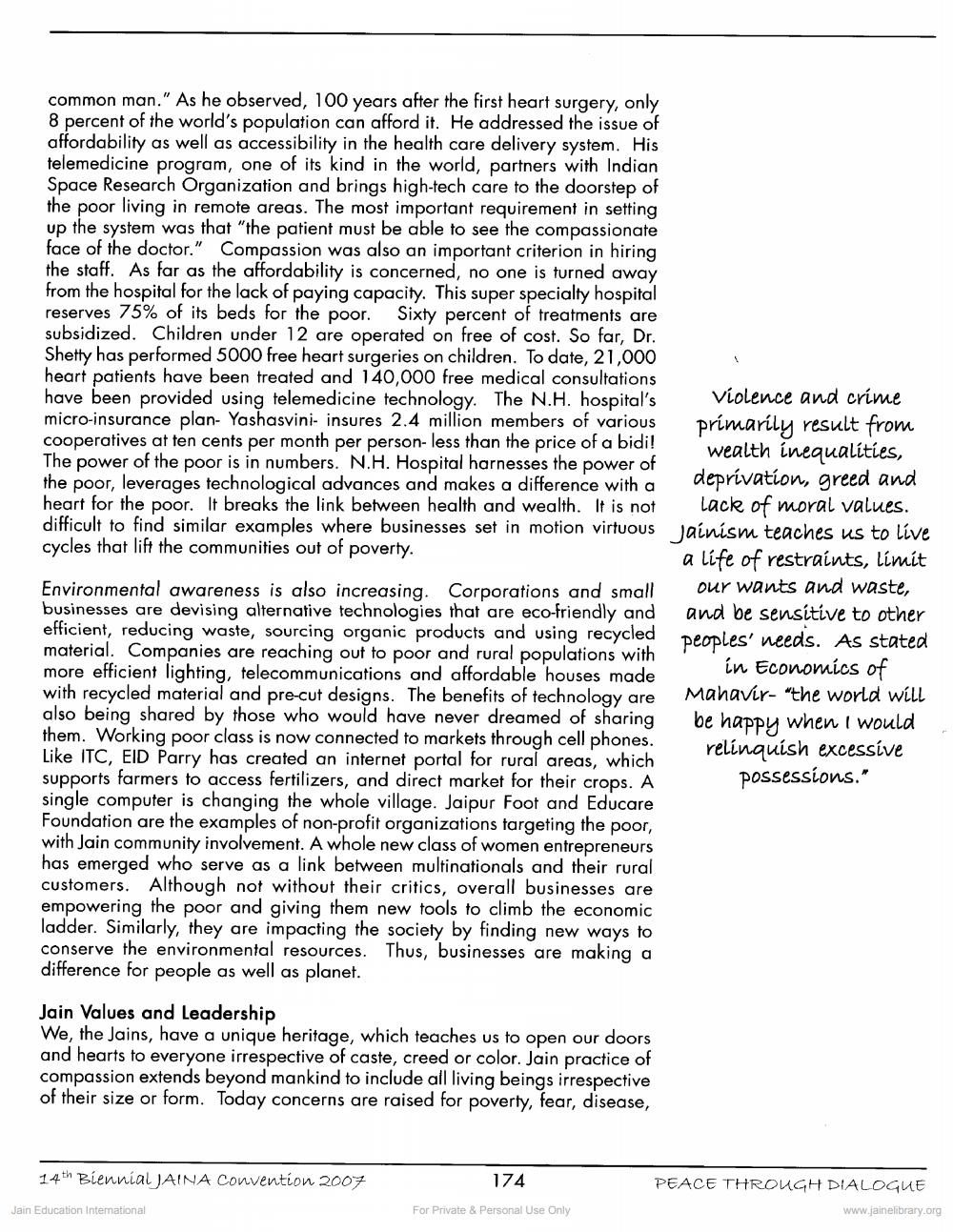________________
common man." As he observed, 100 years after the first heart surgery, only 8 percent of the world's population can afford it. He addressed the issue of affordability as well as accessibility in the health care delivery system. His telemedicine program, one of its kind in the world, partners with Indian. Space Research Organization and brings high-tech care to the doorstep of the poor living in remote areas. The most important requirement in setting up the system was that "the patient must be able to see the compassionate face of the doctor." Compassion was also an important criterion in hiring the staff. As far as the affordability is concerned, no one is turned away from the hospital for the lack of paying capacity. This super specialty hospital reserves 75% of its beds for the poor. Sixty percent of treatments are subsidized. Children under 12 are operated on free of cost. So far, Dr. Shetty has performed 5000 free heart surgeries on children. To date, 21,000 heart patients have been treated and 140,000 free medical consultations have been provided using telemedicine technology. The N.H. hospital's micro-insurance plan- Yashasvini- insures 2.4 million members of various cooperatives at ten cents per month per person- less than the price of a bidi! The power of the poor is in numbers. N.H. Hospital harnesses the power of the poor, leverages technological advances and makes a difference with a heart for the poor. It breaks the link between health and wealth. It is not difficult to find similar examples where businesses set in motion virtuous cycles that lift the communities out of poverty.
Environmental awareness is also increasing. Corporations and small businesses are devising alternative technologies that are eco-friendly and
efficient, reducing waste, sourcing organic products and using recycled material. Companies are reaching out to poor and rural populations with more efficient lighting, telecommunications and affordable houses made with recycled material and pre-cut designs. The benefits of technology are also being shared by those who would have never dreamed of sharing them. Working poor class is now connected to markets through cell phones. Like ITC, EID Parry has created an internet portal for rural areas, which supports farmers to access fertilizers, and direct market for their crops. A single computer is changing the whole village. Jaipur Foot and Educare Foundation are the examples of non-profit organizations targeting the poor, with Jain community involvement. A whole new class of women entrepreneurs has emerged who serve as a link between multinationals and their rural customers. Although not without their critics, overall businesses are empowering the poor and giving them new tools to climb the economic ladder. Similarly, they are impacting the society by finding new ways to conserve the environmental resources. Thus, businesses are making a difference for people as well as planet.
Jain Values and Leadership
We, the Jains, have a unique heritage, which teaches us to open our doors and hearts to everyone irrespective of caste, creed or color. Jain practice of compassion extends beyond mankind to include all living beings irrespective of their size or form. Today concerns are raised for poverty, fear, disease,
14th Biennial JAINA Convention 2007
Jain Education International
174
For Private & Personal Use Only
violence and crime primarily result from wealth inequalities, deprivation, greed and Lack of moral values. Jainism teaches us to live a life of restraints, limit our wants and waste, and be sensitive to other
peoples' needs. As stated in Economics of Mahavir- the world will
be happy when I would relinquish excessive
possessions."
PEACE THROUGH DIALOGUE www.jainelibrary.org




